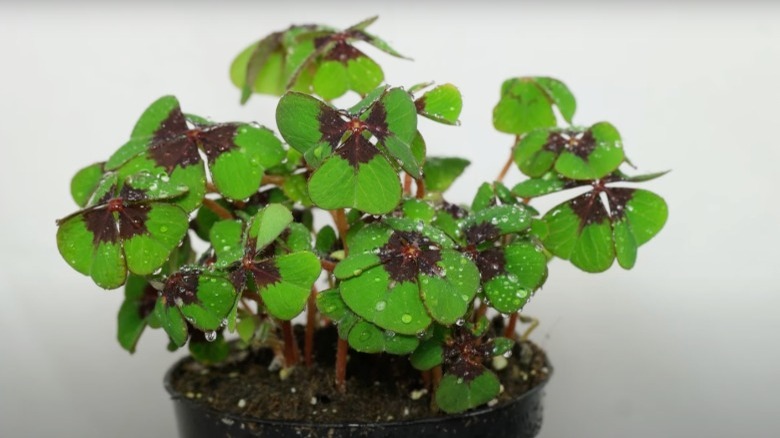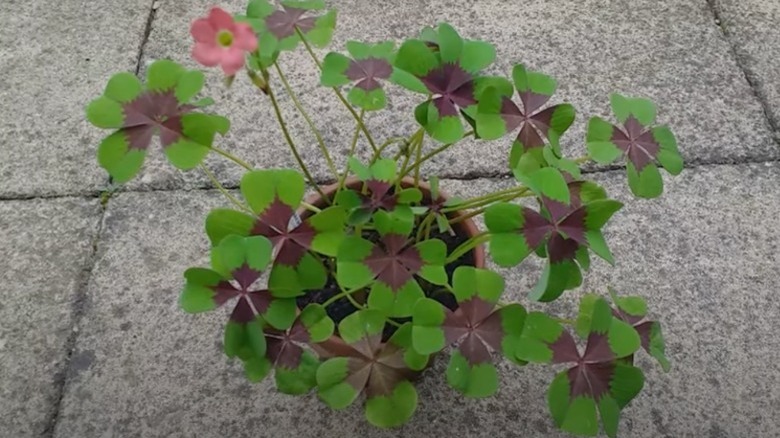The Substitute Four-Leaf Clover Plant That's Luckily Much Easier To Find
Finding a four-leaf clover is a sign of good luck and protection. In the Middle Ages, Celtics believed they had magical properties — if you found one, it was thought to protect you from evil spirits and even help you to see fairies. So why are these clovers so rare? They're actually a result of a genetic mutation, occurring in only 1 out of every 10,000 buds.
Fortunately, you can make it even easier for you and your family to find some good luck by planting the Oxalis deppei plant. It is also known as the Irish cross and good luck plant because of its similarity to clovers. Instead of searching for foliage with four leaves, every stem has them. This plant looks like a larger version of a clover with a dark purple circle in the center where the leaflets come together. Another minor difference is that instead of blooming white flowers, they're red. The Irish cross is a great substitute for those looking for some luck.
Try growing Oxalis deppei
While the Oxalis deppei plant isn't an actual clover variety, it looks like it could be. It's really part of the wood sorrel plant family, which are herbaceous perennials. It got the nickname good luck plant because of how similar the foliage is to a four-leaf clover. While the leaflets look identical, the Oxalis deppei is special. Every night it folds its leaves together. Then once the morning sun shines, it opens its leaves. If you give the good luck plant the proper care, it'll gift you with more than just protection. Beautiful flowers will bloom from spring to summer.
Everyone wants some luck on their side, so why not grow an Oxalis deppei? It's easy to care for and can live in a garden or inside your home. However, you need to be careful if you plant them straight into the earth. They are an invasive species and will quickly take over your yard. They can do this because they have tuberous roots that are fast to grow. You can avoid this issue by planting them into a pot.
How to care for the good luck plant
Caring for a good luck plant is easy once you find the proper watering schedule. They can be picky when it comes to how moist the soil is — they like their potting mix to be damp but not too wet. If you watered them too frequently, they could become flooded and die from root rot. The amount of sun your good luck plant gets can help its soil dry out. They need bright, indirect light. You don't want to put them right in the sun because their foliage will burn, so choose an area in your yard with some shade. If you're keeping this plant indoors, move it further back from the window.
Depending on your climate, you may be able to keep this plant outside. Good luck plants thrive in USDA hardiness zones 8 and 9. This is because they prefer warmer weather. Once it gets colder than 55 degrees Fahrenheit, you should dig up the bulbs and store them until next spring. Although, sometimes you can overwinter them with mild temperatures. During this time of year, good luck plants go into dormancy. They won't need any water, fertilizer, or much sunlight. If you keep your plant inside, move the pot to a cool, dark, and dry closet. Their foliage will begin to fall off, but you don't need to worry because it will regrow once the weather gets warmer.


